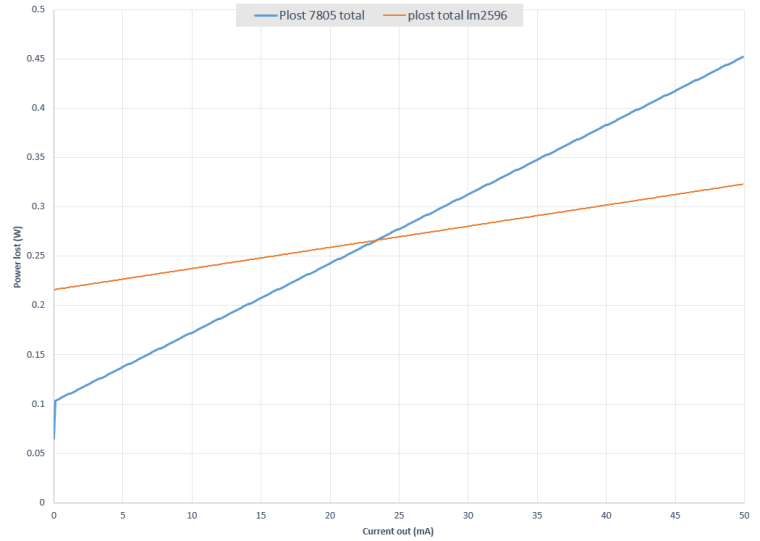RGB LED strip controller with FastLED
-
-
@pansen Agree and price is one thing but I would prefer a linear regulator for its stability and noise.
@AWI Was about to say that ;) For a hobbyist it doesn't matter that much but switching regulators are quite nasty when it comes to EMI.
@gohan: A good rule of thumb is to assume that the voltage difference from input to output of the linear regulator will be converted to heat. So if you have a high current application or a high voltage difference a switching regulator is better. In case of running an Arduino (let's say it consumes 80mA@5V which is quite high) it's negligible: P=U*I=(12-5)*0.08=0.5W which should be dissipated without heatsink easily.
edit: ah you just answered yourself ;D
-
@AWI Was about to say that ;) For a hobbyist it doesn't matter that much but switching regulators are quite nasty when it comes to EMI.
@gohan: A good rule of thumb is to assume that the voltage difference from input to output of the linear regulator will be converted to heat. So if you have a high current application or a high voltage difference a switching regulator is better. In case of running an Arduino (let's say it consumes 80mA@5V which is quite high) it's negligible: P=U*I=(12-5)*0.08=0.5W which should be dissipated without heatsink easily.
edit: ah you just answered yourself ;D
-
@pansen To add to that... these step down Power converter(boards) are not really suited for low power applications. Their efficiency is likely (much) worse than a linear regulator.
@AWI Ha, I forgot about that...I remembered that you actually need a minimum load on the output of the switching regulator for it to even run. I created a spreadsheet just taking into account the quiescent currents and assuming 70% effciency for the lm2596 (a "bit" optimistic. Datasheet says 80% at 3A load for 12V-5V operation). Quiescent current for the LM2596 is much higher.
Considering the mini pro takes about 12-20mA running, I am sure to opt for the 7805 or LM317 from now on ;) (If there is nothing else drawing current). I think nano etc are comparable but the FTDI USB to serial converter probably adds some current that the mini pro is missing.

